How to keep deer away from plants – 5 tips for protecting your flowers, shrubs, and trees
Prevent these pests from spoiling your gardening efforts


As elegant as they are, deer are usually unwelcome visitors in the garden. This is due to their penchant for nibbling at plants, removing flower buds, foliage, and shoots as well as stripping tree bark when food supplies are limited.
Not only this, but male deer can damage young trees' trunks with their antlers. This is known as 'fraying' and is to mark territory and remove the velvety coating that covers them.
Spotting damage from a deer in your yard can be frustrating, to say the least. One option is to stick with deer-resistant plants and deer-resistant shade plants – but if you don't want to feel restricted with your planting choices, there are other ways to keep them at bay.
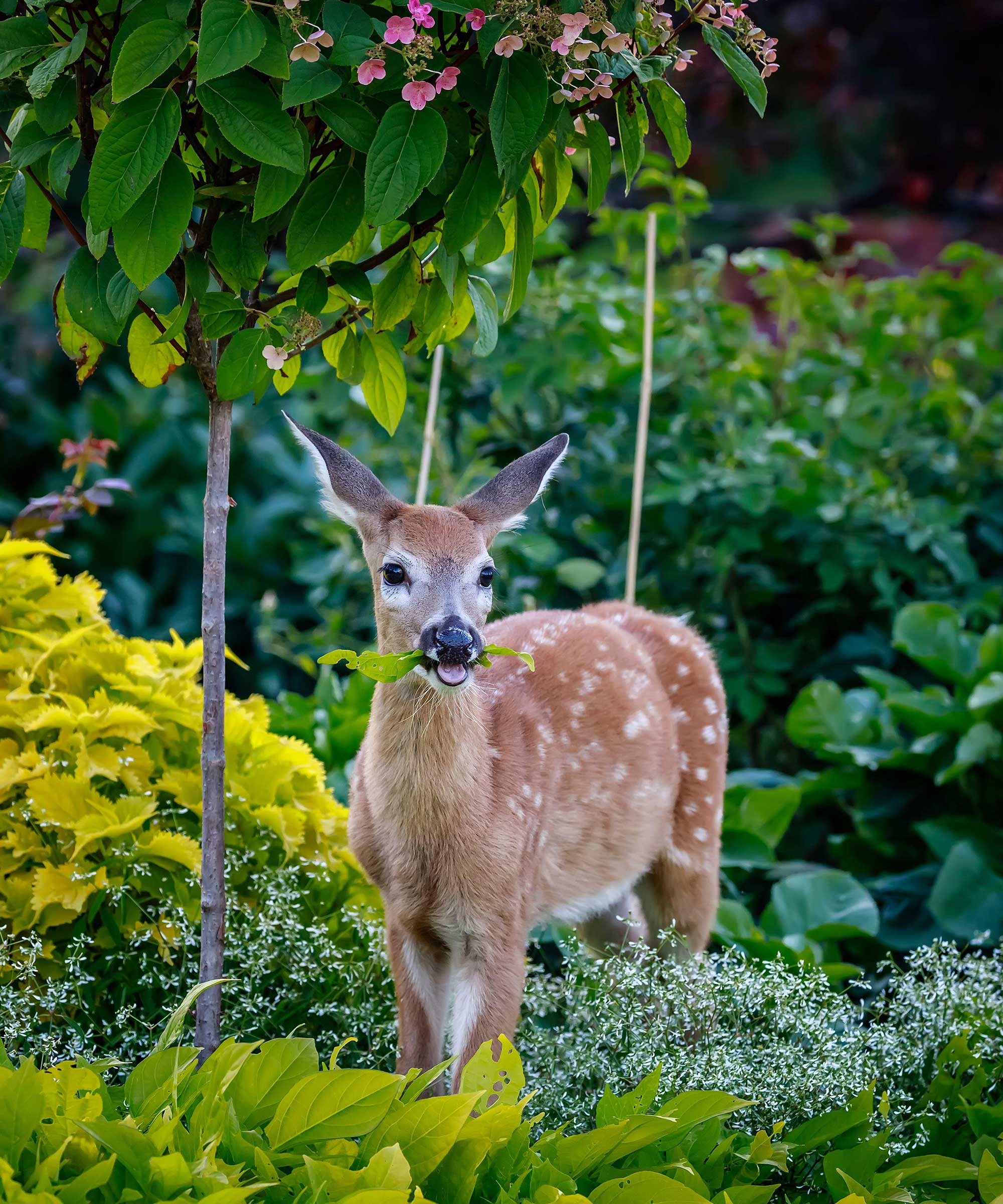
Deer can cause significant damage to garden plants
5 ways to keep your garden safe from deer damage
Try these tips to ward these animals off your precious plants.
1. Install a fence
One of the best ways to keep deer out of your garden is to install a backyard fence, and a sturdy backyard gate. It'll help to keep other larger pests, such as skunks, out of your yard, too, while improving the security of your home overall.
'Deer can jump quite high, so an 8-10ft tall fence is necessary to successfully keep them out of your garden,' says Anna Ohler, the Owner of Bright Lane Gardens. 'You will need to build it around the entire perimeter of your garden, otherwise they will find the break in the border and will enter the garden through that,' she adds.
Alternatively, opt for a fast-growing hedging plant.
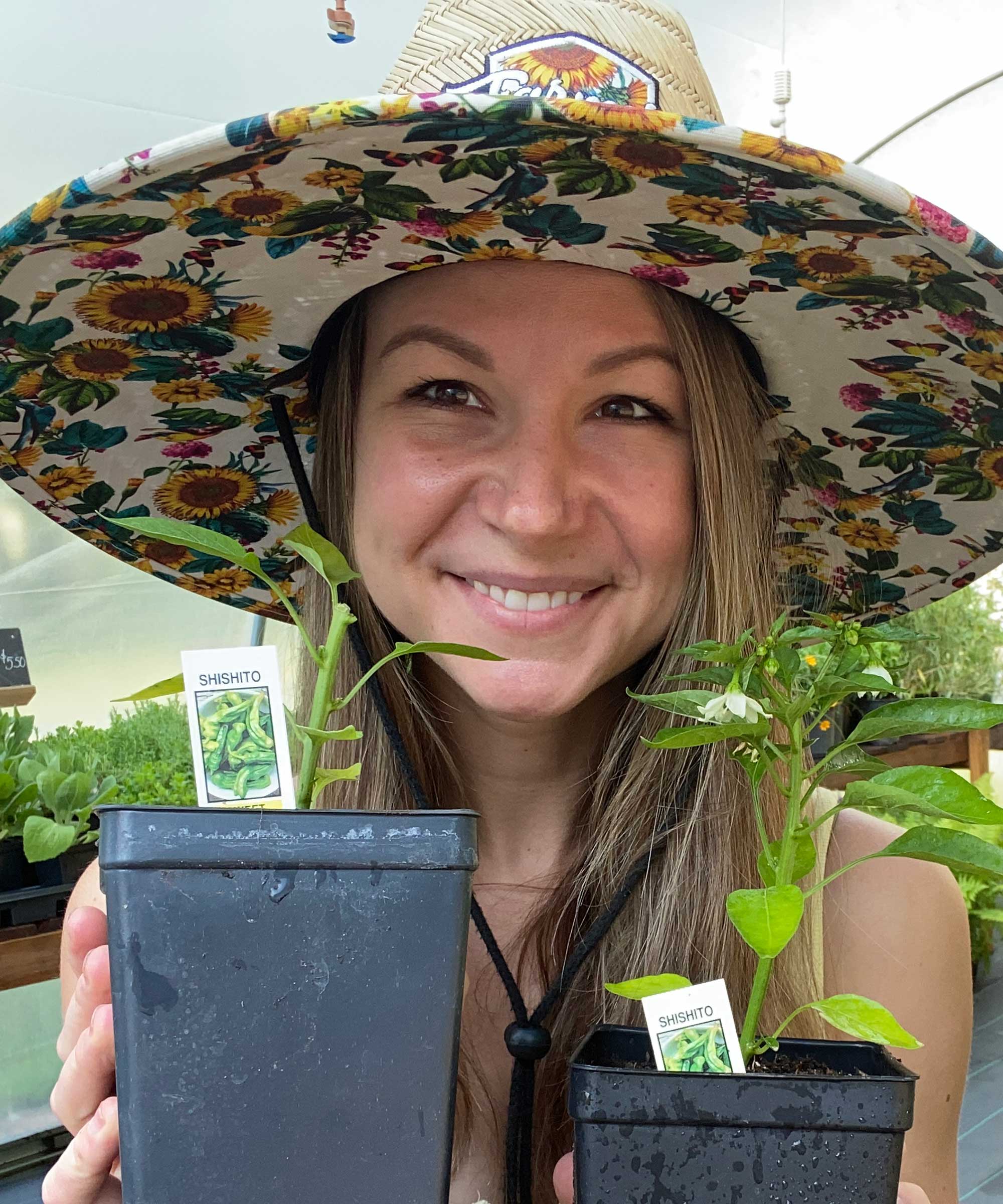
Anna is an avid plant hobbyist and the Owner and Operator of Bright Lane Gardens, a boutique plant nursery in Northern Michigan. With over a decade of experience in gardening and landscaping, she takes every opportunity to share her knowledge on all things plant related.
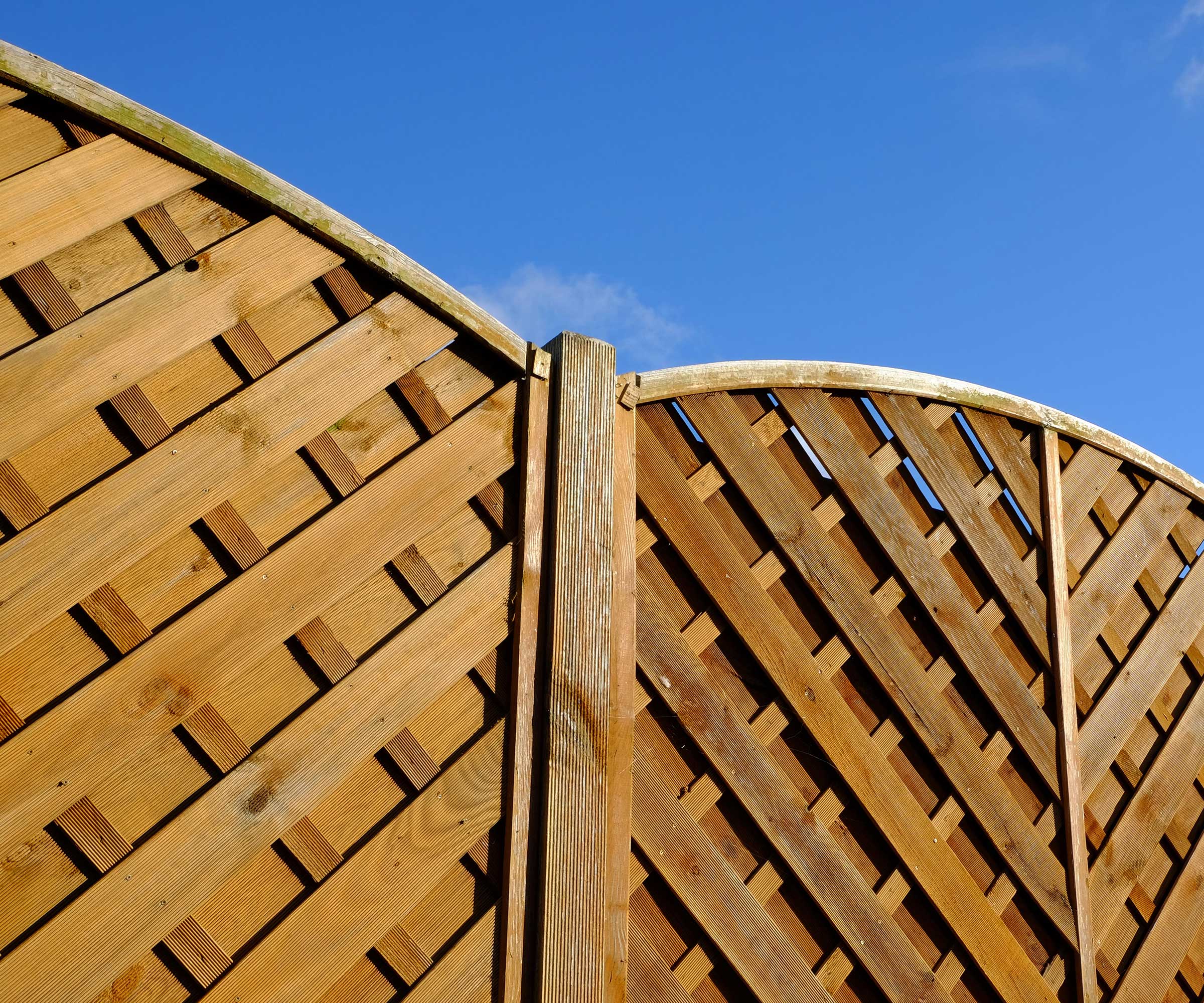
Make sure your fence is tall enough to keep these animals out
2. Use a deterrent spray
You can find sprays made from natural ingredients that use particular scents to deter deer. Anna's top choice is a concentrate made by Bobbex – available from Amazon – which needs diluting with water before use. Another well-rated example is I Must Garden's repellent spray, also available from Amazon, which includes peppermint, garlic, and cinnamon.
Design expertise in your inbox – from inspiring decorating ideas and beautiful celebrity homes to practical gardening advice and shopping round-ups.
Sprays are highly effective in keeping the deer away from the plants you spray, Anna says, although she adds that they need reapplying after rainfall, and you can often smell the odor from several feet away.
Also, note that they are generally for ornamental plants only, and shouldn't be used on edibles.
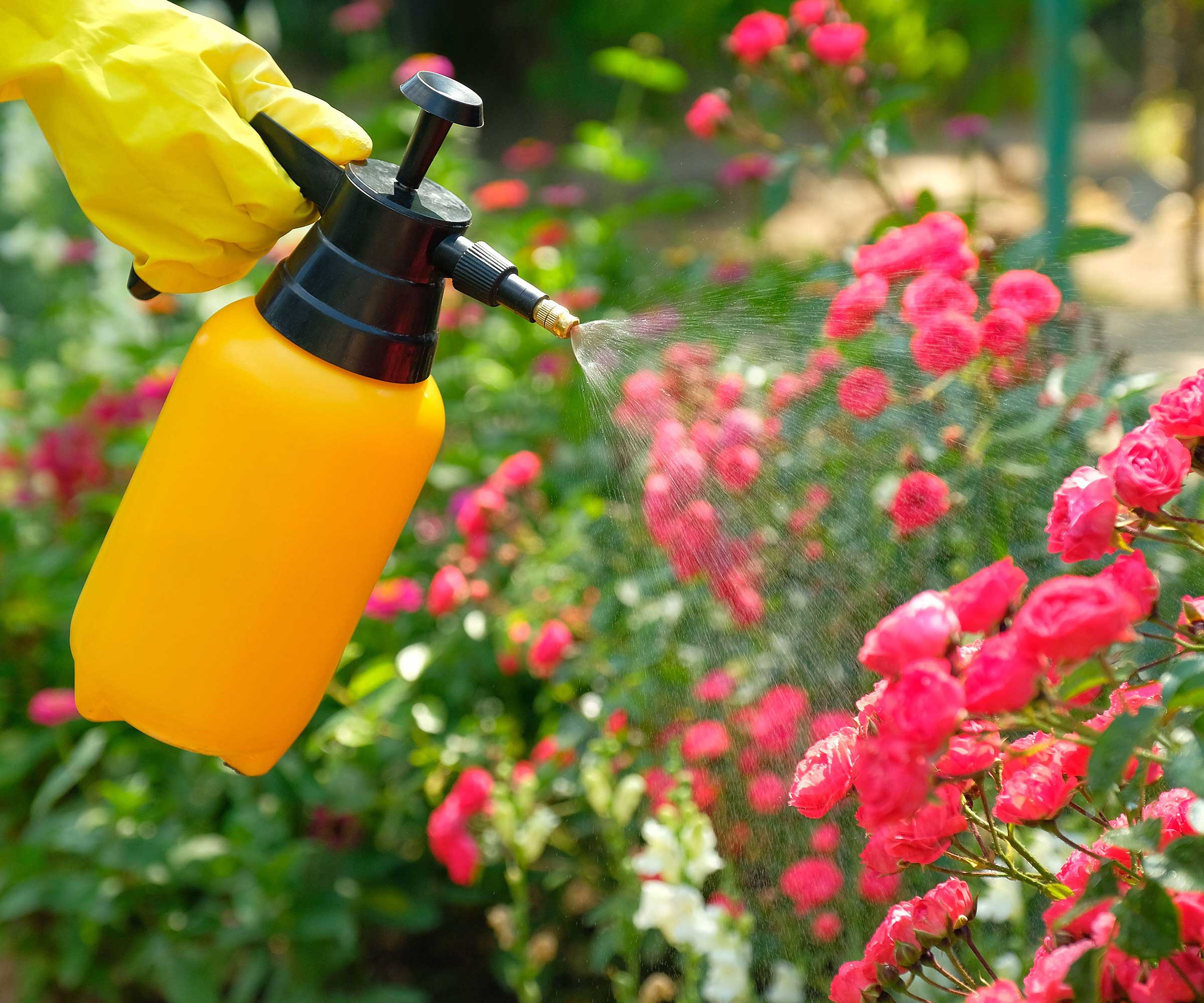
Sprays use fragrance as a deterrent
3. Cover your plants with netting
Netting is a quick and effective solution against many plant pests, deer included.
Made from recycled materials, this netting from Dalen at Amazon is well-rated. Combine it with stakes or hoops to build protective structures around your ornamental plants and vegetable garden.
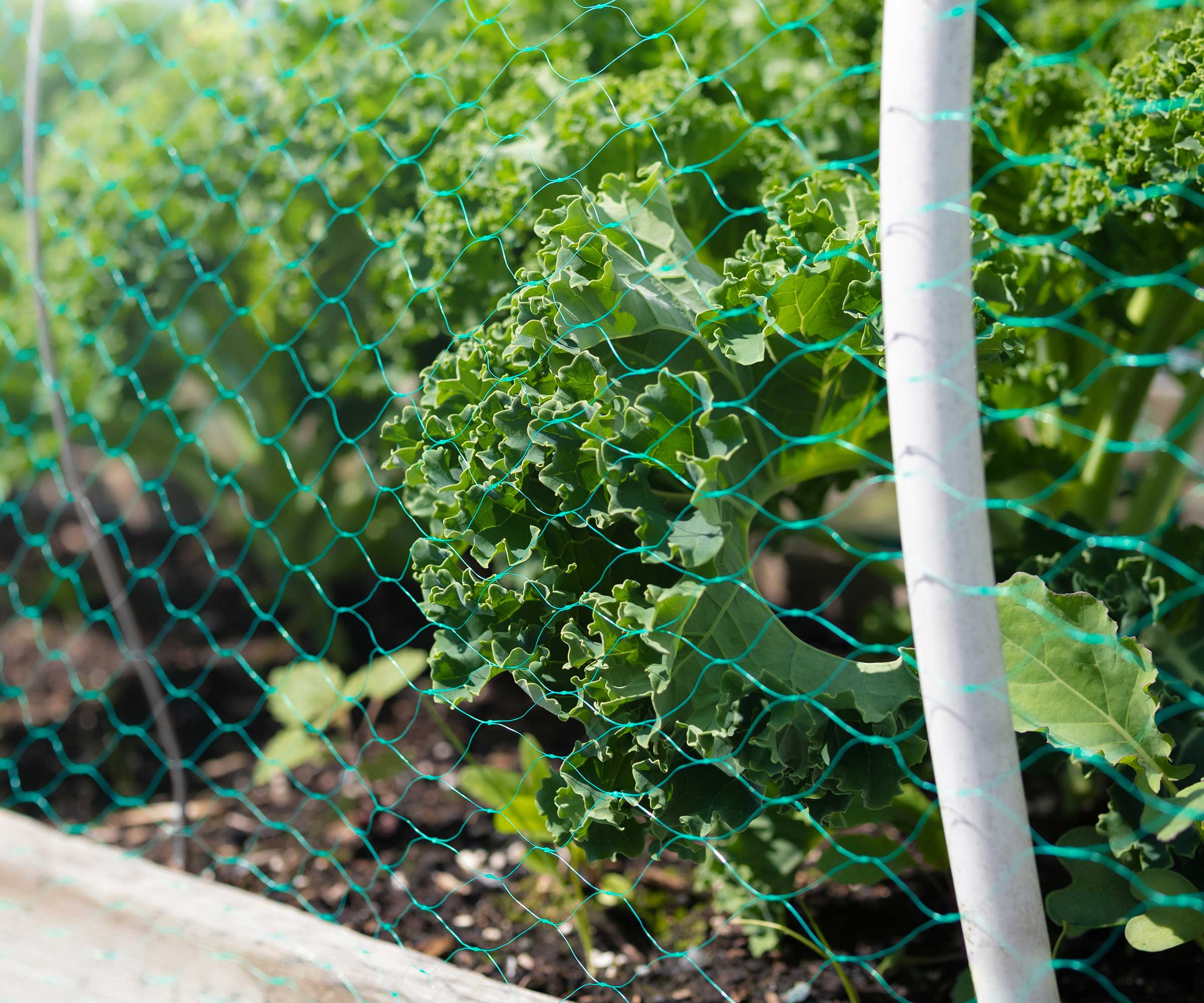
Netting can provide a quick fix
4. Protect tree trunks with guards
John Negus, a gardening expert, suggests enclosing your trees in tough plastic sleeves that are designed to stop deer from chewing the bark. This can work against rabbits, too, who can cause similar damage. They will also provide a barrier against that 'fraying' behavior, mentioned above.
There are lots of varieties available online, such as these plastic tree trunk protectors from Mioloe at Amazon, which can be stacked if needed.
As an alternative option, the Royal Horticultural Society suggests using wire netting around trees. Covering 4ft of the trunk should be enough to protect it from roe deer, but taller guards will be needed for larger species, such as red deer, they advise. You can also protect leading shoots by twisting sheep's wool around them, they add.

John has been a garden journalist for over 50 years and regularly answers readers' questions in Amateur Gardening magazine. He has also written four books and has delivered many talks over the years on horticulture.
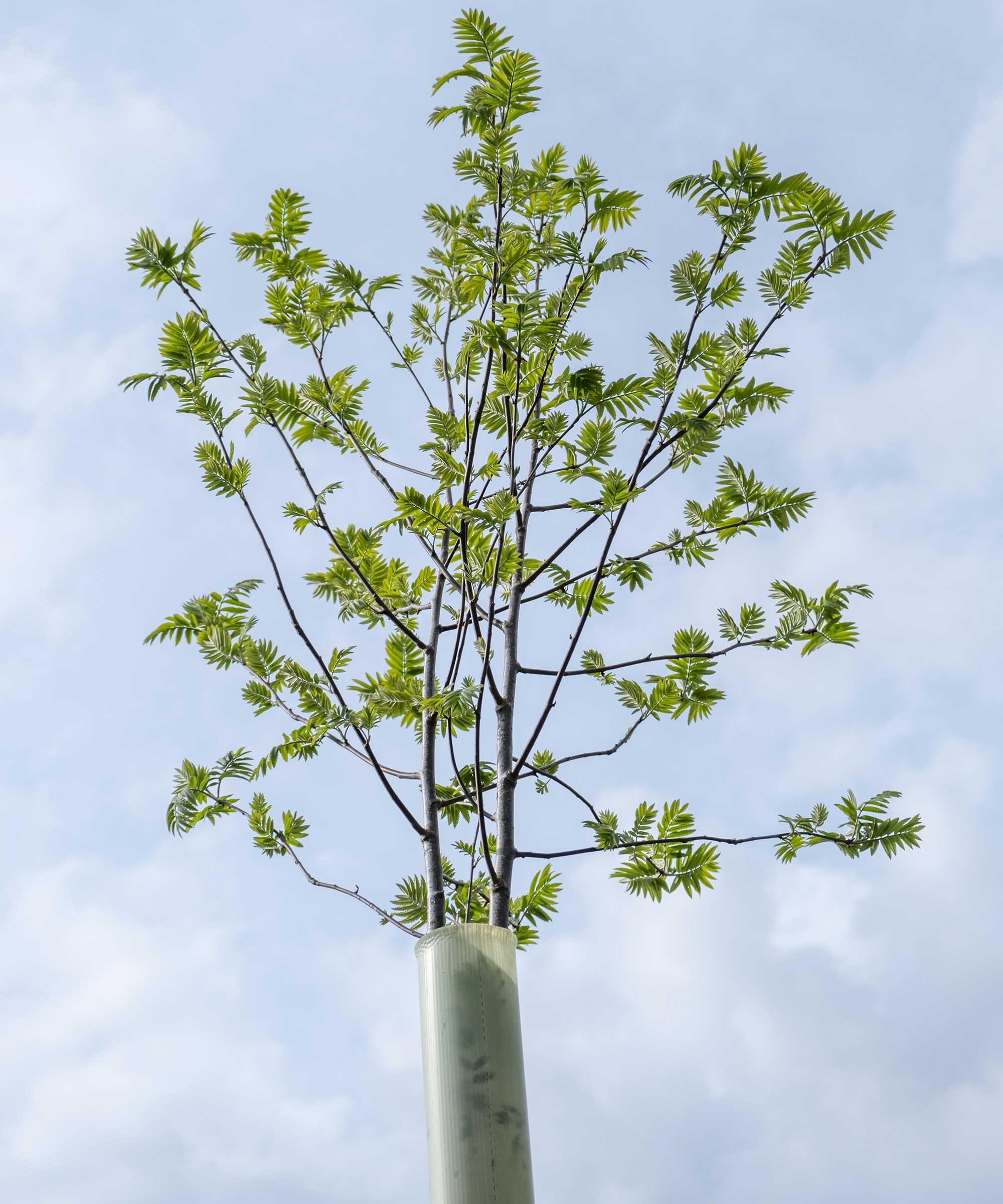
Tree guards will protect the trunk
5. Use soap for a DIY solution
‘An increasingly popular method to discourage deer from entering certain areas is the use of Irish Spring Soap [available from Amazon],’ reveals Autumn Hilliard-Knapp of Perfect Plants Nursery. ‘This technique is both straightforward and highly effective: simply place a bar of the Original scented soap in a mesh bag, tie it shut with a drawstring or knot, and hang it in or near the desired area.
‘You'll want to position the soap at a height of around four feet, which is a typical deer's height,’ she continues. ‘The scent of the soap will lead the deer to believe that the food there is unappetizing, prompting them to move on. Typically, one bar of soap can deter deer from an area of around 10x10 feet. Homeowners may choose to hang the soap directly in their garden or in an area where they've noticed the deer entering their property.’
Alternatively, you can buy pre-made deer-repellent pouches, such as these from PredatorGuard at Amazon, which work in a similar way.
Autumn adds that you can also grate Irish Spring Soap into small shavings and scatter them around your garden, or rub the bar directly on fences or other structures to create a scent barrier.

Autumn is a horticulture specialist and marketing professional at Perfect Plants Nursery. With four years of experience in the horticulture industry, she has developed a passion for helping people create beautiful indoor and outdoor spaces to enjoy. Her expertise in horticulture encompasses a broad range of activities, including plant care and selection, landscape design, and maintenance.
Although deer can be troublesome, they're not always to blame. Foxes, squirrels, and other animals can also wreak havoc in a garden, so look out for them, too.
And bear in mind that sometimes suspicious signs of damage can actually be caused by something else entirely. Buds suddenly disappearing from a plant, for instance, may be due to frost damage or a lack of water, rather than an interloper.

Holly started writing about gardening five years ago, and she is a regular contributor to Homes & Gardens. She has also written many gardening features for Woman & Home and Real Homes, too. She has previous experience as a professional gardener, where she helped to plant and maintain private gardens. Holly has also looked after allotment plots over the years and loves to grow her own flowers and veggies from seed. In her spare time, she enjoys visiting local gardens, botanical drawing, and tending to her ever-growing collection of houseplants.